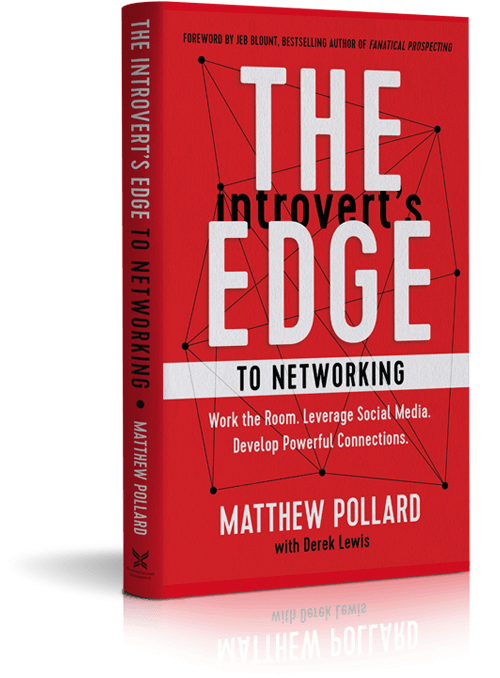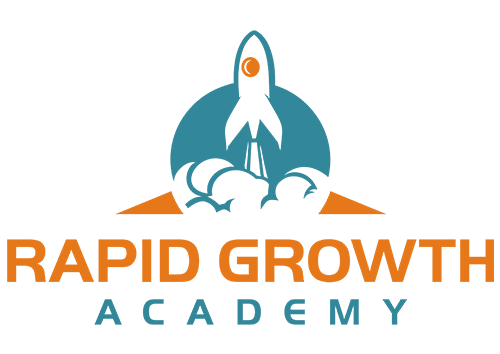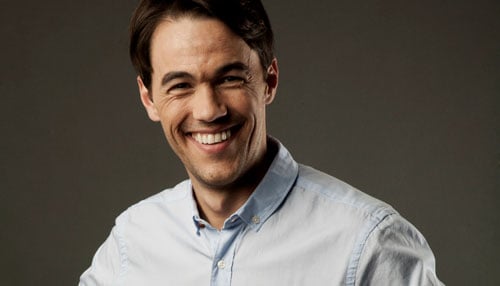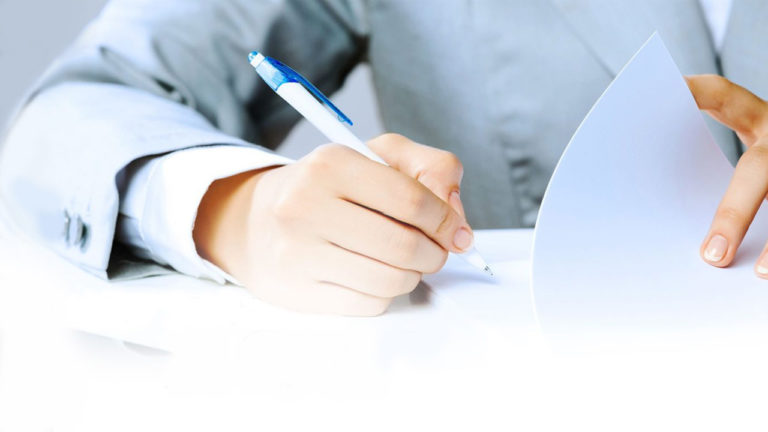School for Startups Radio Transcript
Jim Beach: Welcome back to School for Startups Radio. Hope you’re having a great day. Hope you’re using the day to somehow make yourself a better business leader. More likely to be followed and more likely to be the millionaire, billionaire, trillionaire that you want to be. Hope you’re planning to take over the world.
I am so excited to introduce you to my next guest. His name is Matthew Pollard. He’s calling in from Melbourne, Australia so we greatly appreciate that. He is a coach with Moving Forward Business Coach and he is also a Sales and Marketing Guru. Today, we are going to talk about a lot of sales but in particular we want to focus on scripting and how important that can be. Matthew, thank you so much for being with us today. How are you doing today?
Matthew Pollard: I am doing very well, mate, and yourself?
Jim Beach: Well it’s actually, its tomorrow where you are. So, you can tell us what happened, can’t you? How did the interview go?
Matthew Pollard: I can, mate. I can. It’s about 8:30 in the morning here, so it’s quite hard to get used to the different time zone, isn’t it?
Jim Beach: Alright we are exactly backwards right now from each other, I guess. So we’re on opposite ends of the spectrum. Matthew, tell us what your number one belief about sales and marketing is? Can anyone learn to do this? I’m an entrepreneur. I’m good at taking care of shoes. I’m a good dentist. I’m a good restaurateur. I didn’t open a restaurant to sell, to be a salesman.
Matthew Pollard: Look, I get that a lot. I mean I speak to a lot of different business owners across lots of business industries and what I tend to find is people continually tell me that they “don’t want to be sales person.” I think that in a large way there’s a stigma against being a sales person as a consequence, people don’t spend the effort they need to actually develop that skill. Of course it can be learned, everybody can learn it. It’s like explaining it like a surgeon going into an operation for the first time. If they don’t have any system, any procedures and they just expect to be able to do it? Of course, you’re going to find it uncomfortable.
I’m continually surprised by people that spend thousands and tens of thousands of dollars on education. Years of trying, years of experience to become an accountant or a doctor or even a plumber or electrician, but when they come to the sales, they seem to think, “I can just do that. That’s one of those things I’m supposed to either be able to naturally do or not naturally do.” And then, get surprised when things don’t work out. I mean, the major thing that you need to understand is that sales just like any other traditional skill needs to be learned by practice, plus also understanding how to learn that skill and by using theory to do that.
Jim Beach: Alright well Matthew, I just want to tell you a family story. There are doctors in my family. I’m going to be obscured because I don’t want to get anyone indicted. But one of the doctors in my family, there is a story about them getting out a textbook at breakfast and one of their children say, “Daddy, what are you doing?” and daddy saying, “I have an operation this morning and I’m learning how to do it.” So [Laugh] That’s scary, isn’t it?
Matthew Pollard: Look that doesn’t surprise me. To be a doctor, you need to know so many different systems, so many different procedures. The great thing about sales is once you start to understand the steps in the process, you realize it’s really quite simple. And you only have to learn one group of processes and one group of steps. I mean I get to the stage now where, I mean I go through the selling process, I just follow through the motions and the next thing I know I’m doing the paper work.
I think where people get confused is they say, “Well it’s so big a concept, I don’t think I have that natural ability to be able to pick it up.” And once we start to break it down into simple steps or I guess I call them chapters, you start to really understand, well, ‘I can do this.’ The major thing is, by doing the chapters you can also learn where your missing things and whether you’re doing things back to front. Once you start to understand the sales process you realized, it really isn’t that complicated. What you do need to do is spend a little bit of attention in getting it right.
Jim Beach: All right, let’s dive in Matthew and talk about the seven steps. What is the first thing that we need to worry about? What is the step number one?
Matthew Pollard: Ok so what you really want to do is work on building that trust and rapport with the customer. Most people will either feel uncomfortable when they walk into a sale, but they go straight in to the sale pitch, without building any relationship. Other people spend too long building the relationship and then before they know it the appointment is over and they haven’t spent any time talking about their product, because they’re too worried about whether the person is going to like them. So what I suggest is you go in and you spend—you know—four or five minutes just building that trust and rapport, so that the customer feels that you’re a relatable person to them.
Jim Beach: All right! Well Matthew, that’s interesting. You’re Australian and I’m American, I know that Americans have the least value in relationships. I know if we go to Japan or Saudi Arabia and try to do business, they’ll want to spend a day getting to know us before they’ll even talk business. There’s the famous story about an American businessman going to China for a week and them spending six days getting to know each other. Is four or five minutes enough? It seems to me too short.
Matthew Pollard: So what you’ll find is that I completely agree with you and there are lots of stories especially in the computer industry where big computer organizations from the US have gone over to China and got into talking business too much without talking about the relationship and building the relationship enough to really grow that sales process.
In the Australian demographic and the US demographic, what they really want to do is make sure that the person is like minded. There’s lots of learn Neuro-liguistic Programming or NLP or psychological studies that you can look into. That will say that, “In the Australian or American psyche, what they’re really looking for is somebody that they can identify as likeminded.” Somebody they can believe they can trust. And if you’re very direct and very specific about how you do that, then you’ll always build that relationship in a natural period of time. But that alone won’t help you get the sale and get the signature. You’ve got to go through the rest of the steps like, an introduction and building the agenda, so the person understands what you’re going to cover.
Jim Beach: Let’s go on the step number two then, Matthew. What’s that?
Matthew Pollard: Ok so what you really want to be focused on is getting the customer to understand who you are, what products and services that you provide, and how they can potentially help them. You want them to understand why the product exists and who the different competitors are, but why is yours different. And you also want them to understand and this is critical, you want them to understand the role you play in the process and how you’re going to undertake the appointment. So when you start to lead to the next step, which is probing questions, you’re going to start to explain things like, “So what I’m going to do is I’m going to go through, I’m going to ask you a few questions if that’s okay and that way I’ll be able to best help you or best look at what’s going to suit your needs.”
Jim Beach: That’s interesting Matthew, so you’re saying the important thing is to tell your sales prospect what the next step is, along the way. Is that a proper way to rephrase it?
Matthew Pollard: It is definitely the case. I mean, so what I like to do at the start is I like to do a summary of how I’m going to perform the process. I say, “Look, basically what my job, my job is to come out and ask you a few questions about what you do or what are the main problems within your business.” And then based on those questions, I’m going to be really able to look at what I can do to help you in your situation and then you can move on to additional factors. But if you don’t explain why you’re there and what you’re going to do before you can explain what you can do to help, it doesn’t work as well. I mean, I worked in the telecommunication industry for years and I’m sure everybody in the US, has had somebody knock on their door, or walk into their business and try and sell them call rates without actually understanding how they use their phones and understand what plans they’re on. They just want to sell the brochure.
Most people from what I find that are unskilled in sales want to sell brochures, because that’s the most comfortable thing to do is to read off from the brochure and then give quote. What you really need to do is understand what the person is trying to achieve. And if you don’t set the agenda to explain what your key purpose is, then the customer is going to go, “Oh here we go, another sales person trying to sell me something.”
Jim Beach: So, step number three is probing questions?
Matthew Pollard: Yep, definitely. So what you really need to do is you need to ask them questions that highlight, identify or create a want, need or problem that your product and service can solve. Now, I’ve seen many consultants or many sales people, or many want to be entrepreneurs, who go out and asked 100,000 questions about the person’s business. Now, asking questions like that gets you nowhere.
If they don’t lead to your sale, and I’ll give you some ideas on how to find some information on how to help yourself learn that process very soon, but if you don’t learn how to ask questions, that cipher and down into, “Okay, so you need my product,” then you’re not giving yourself the best advantage you need. And that’s why so many other sales people tend to swoop in and steal your sale, because that’s what they’re very skilled at doing. I can tell you a hundred thousand times where I’ve gone into an appointment that somebody’s had three, four, five other sales people before me and all offered them products and brochures and because I’ve asked the right questions, I generally signed that person up right there on that day.
You also want to search by asking these questions, what their objections are. For instance in education that I used to organize sale strategies for, quite frankly somebody may have a bad experience with school. They might have dropped out of school in year ten. They may have done a seminar that they didn’t like. In telecommunications—they may have had a bad experience when they swapped providers in the past.
What you want to do is really try and highlight what they’re scared about, because sales isn’t just about trying to get them to understand they need your product, you’ve got to get them over those hurdles that could potentially create those barriers. And generally people are scared to ask those questions because they don’t want them to come up because that would hurt the sale. In fact, it does the opposite.
By asking the question, it means that you know what the problems are and then you can talk about them, rather than getting to the end and the person saying, “I want to think about it.” because you haven’t covered off on what their key concerns are.
Jim Beach: Alright it makes a lot of sense, number four, Matthew.
Matthew Pollard: Ok so you want to cover off on your presentation skills. But the main thing that you need to focus on is don’t be a brochure sales person. Don’t just talk about the features. So many people will go in and say, “Oh we’re going to be able to teach you time effectiveness.” Well time effectiveness is great, but if you don’t relate it to a tangible benefit like being able to spend more time with their kids, it just doesn’t make sense to them. While they go, “I’d like to have more time.” They don’t actually relate to it as much and therefore aren’t as conscious to want to make that purchase.
The other example I can give you is if you say to somebody, “I’ll be able to save you $5,000 on your annual bill.” or “I’ll be able to reduce the price of this phone system” or “This computer system by $5,000.” Again, they can’t relate to it. A saving is…it’s just a number. Until you say, “That could be a holiday for you and your partner.” Or, “A couple of new laptops for your kids.” Those are tangible things they love to do. And as a byproduct, they’re more likely to buy your product.
You also want to make sure you cover off on the consequences of the pain associated with not purchasing your product or service. And a lot of people forget this, because they think that it is self evident to people. They got you in as a business consultant, because they’re not enjoying their business, they’ve forgotten why they’re in business, they’re not making the money they have and everything is falling apart. By telling them that you’re going to be able to, perhaps as a coach, really help them get control of the business, strategically plan their whole business, so that everything sort of, works like clockwork. But if you don’t say as a consequence, if you don’t purchase or highlight, you know, if you don’t want to be working 20 hours a day anymore, you don’t want to be stressed, you don’t want to be worried about the phone ringing because those bills keep coming in, then people don’t associate with the pain. People tend to buy because of pain or pleasure. If you can talk about tangible benefits that they can see and make them move away from pain, because they want to get away from their current existence, then that’s how you get people motivated to buy.
Jim Beach: I’ve heard that you should never sell pain, you should only sell pleasure. Is that true?
Matthew Pollard: Well what you want to do is you want it to delicately highlight the fact that they’re in pain. What I tend to do as part of my questions cipher is I’ll go through and I’ll ask them question by saying, “Ok so what are the common problems you have in your business right now?” and they’ll tell you about those problems. I tend to go through and say, “Ok well these are the couples that I think I can help you with.”
But first we want to understand, “Are people telling you about this problem or are you seeing it.” Get an understanding of how important that problem is. Now, we want to get an understanding of what that problem is costing them. And if they tell me what their problem is costing them, then I can say, “Well I can understand why you’d be stressed about that.”
Rather than telling them and forcing the consequences down their throat, I want them to talk about their pain. If they talk about it, they’ll remember it, they will believe it. If I tell them they should be in pain then people will get upset with you because all of the sudden, you’re putting them down and people don’t like to have that experience.
Jim Beach: Alright let’s move on, number five.
Matthew Pollard: Okay. So we like to focus on story of success. Ok so how easy and simple the process was to somebody else. If I start saying to people, “Our product is fantastic, it works for a bunch of people.” It doesn’t really make the customer sit there and listen. People love to hear stories, so what you want to do is, you want to seed the stories of success into stories of how you help other people. Explain to them how you had a person exactly their position and what you did to fix their problem or to help them have a business benefits.
As a consequence, people listen to those stories and they’ll listen to all of the benefits and they relate them to how you could potentially help them. You also want to talk about how you assisted someone like them with something you’ve suggested. You can say, “Well I know that we’re talking about this product and this is the success we have had with this, but this is something else as well that also happened as a byproduct of that.” so as many stories as you can tell the better.
You also want to cover off on their objection with stories. For instance, I had a person that had, you know, a really bad experience in year ten or finishing high school. Never wanted to do school anymore, and now after doing this their business is prospering because this is just a different type of education. You really want to focus on telling the story about how somebody had an objection and overcame that by working with you.
Jim Beach: Makes a lot of sense, alright number six.
Matthew Pollard: The trial close. Now, this is the most forgotten step in any sales process, because at this point, we start to get very uncomfortable. We start to think, “Oh God, I’ve got to get to the stage, now I’m going to have to ask this person sign a document, sign a piece of paper.” And to me, you don’t want to get to that stage unless you tested the water. Put your thumb in the water and make sure you’re not going to get burned.
Jim Beach: We put our toe in, not our thumb.
[Laugh]
Matthew Pollard: Well everything is quite is strange here. We use a lot of different words.
Jim Beach: Yes, it’s all. And your toilet goes the wrong way too when you flush. So, but anyway, anyway…
Matthew Pollard: It does. To be honest with you, because I’ve been in America quite frequently and what I tend to find is, that I have to always watch certain words. For instance, we put a jumper on when it’s cold. A jumper is what our little girl wears as a dress, from what I’ve been told. But….For trial close, what I like to focus on is I like to make sure that the person is interested. Now, if I was talking to somebody about a product or if I was talking to somebody about a car or anything like that, I would say to them, “What color would you prefer the car to be in? Would you prefer it to be in black or would you prefer it to be red?” If I was talking about education, I would say, “Ok well look, we have got day and night classes available or we’ve got day and night seminars available, which one of those would you prefer to be in?”
The reason why I’m asking these questions is if they’re going to give me an answer, it means they’re about 80-85 percent of the way into signing my paper work. If they turn around and say to me “Oh no, no, I’m not in the process of making a decision.” I know I’ve got a lot more work to do. But if somebody says a positive response to that, you know you’re pretty much there. Right?
And then, if you’re a coach, because I know a lot of people that listen are business coaches, one of the things you can do is say, “Look, I’d like to ask for your permission to tell you how I worked with people just like you.” The reason why you do that is that if somebody gives you permission, you can then start talking about that. It’s unlikely somebody will say no, but if they give you permission you can judge by their interest level on how close to a sale you are as well.
Jim Beach: You know Matthew, it reminds me of when, like, you’re 16 years old or something and you want to ask a girl out but you’re afraid to, so you asked her friend, “If I were going to ask Sally out, what would she say?” It’s almost like that, isn’t it?
Matthew Pollard: Look, it’s exactly like that and surprisingly sales is so much like dating. You’ll find that people, for instance, when they’re going to sell to somebody for the first time, they’re terrified and that’s because they’ve got that approach anxiety. They’ve never done it before. They’re scared. If you’re going to ask somebody out for the first time, you’re scared as well. And because you’ve just gone through this whole sales process, you’re almost emotionally attached to the answer, just like you were dating. It’s a personal response that you hold dear.
So as a consequence, I mean, you want to have a trial close to make yourself feel comfortable, to get yourself over that. The one thing I like about scripting as well is that you just follow the process. You cannot take it as personally, which mean you can be much more indifferent about the answer, which also adds to that success.
Jim Beach: Are you a married man, Matthew?
Matthew Pollard: I’m not at the moment, mate. But I do have a girlfriend and I do understand that having those conversations can sometimes be stressful.
Jim Beach: But you have an unfair advantage, I feel like you should teach dating, not sales. I mean, as you’ve said it’s the same thing. You should do both. You should have dating seminars on the weekend and sales seminars during the week.
Matthew Pollard: It’s actually funny, I teach and coach a guy that teaches and talks about masculinity and how to approach women and I’ve done a lot of work with him and it’s funny how close those strategies are to the person going up and asking the question, “Would you date me?” or “would you go out with me?” Or, “Hi, would you like to have a drink?” As opposed to walking up and saying, “Hi, I’d like you to buy my product.”
The same emotional things that go through your body, the same brain telling you, “No, you shouldn’t do this. No, should run away from this.” is exactly why being a sales person without a process is so hard. Just like dating, you can create strategies to make things a lot easier. Most people don’t do that and then wonder why they find dating so hard. Sales is one of those things as well. I mean, these are seven steps I’m giving you that if you follow the steps to the letter, your sales will go through the roof. Add that to the 14 Steps that I normally work with and it gets much, much better. The reason why we are focusing on only seven today is because a lot of people need to start from scratch and as a consequence, it’s better to focus on these seven. Get these right first and then take that next step.
Jim Beach: And also we’re running out of time, Matthew, so that’s one of the reasons we’re not doing the 14. I need number seven in under a minute.
Matthew Pollard: Yep, no worries. The close, you want to go over things like the program name, the dates, the times, the inclusions, the warranties, the guarantees and then asked for the commitment. Then you want to transition straight in the paperwork like it’s part of the process. Don’t make it seem like such a big deal and if they don’t see you care as much, they will just expect that’s just something that you do. And then ask for the payment by saying, “Ok so we need to organize payment. Would that be credit or check.” Don’t go to the process of trying to make that seem uncomfortable, if you don’t they won’t either.
Jim Beach: Alright Matthew, how can we learn more from you, buy from you, circle you, tweet you, connect with you, LinkedIn with you or send you smoke signals, how can we get in touch?
Matthew Pollard: Ok you can find us on Facebook, which you can find me on Moving Forward Coaching. On the Facebook page, just type that in and you’ll be able to find me there. Also you can email me at [email protected].
Jim Beach: Fantastic. Matthew, thank you so very, very much for being with us today, fantastic information!
Matthew Pollard: You’re very welcome.
Jim Beach: Alright, thanks a lot. We’ll be right back with more School for Startups Radio in just a minute.

























